How to Draw Network Diagram in Cpm
Earlier you lot fix a complex network of servers, routers, and firewalls, you should map out your plans with a network diagram.
Visually laying out your network architecture gives you lot a take a chance to make certain you've thought through every device or component to make sure the entire system works properly. Conversely, should something go wrong in your network down the line, you lot can utilise your diagram to troubleshoot issues.
We created this guide to help you larn how to create useful and informative network diagrams.
This guide is perfect for:
- anyone interested in visualizing a network,
- network engineers and designers learning to create network documentation, and
- people wanting to brush up on the fundamentals of network diagramming.
Nosotros have broken things upward into three parts.
An overview
What is a network diagram?
Network diagrams are used to visually explain figurer or telecommunication networks. They evidence the various components of a network and how they relate to one another.
A network diagram can be every bit simple equally a single application or as complicated equally an unabridged enterprise. And they are used to correspond all kinds of networks including dwelling house networks, wireless networks, LAN networks, activity networks, and more.
We divide network diagrams into two types: physical and logical.
Concrete network diagrams testify the physical layout of the devices that make up a network, like to a flooring plan. This includes cables and hardware.
Logical network diagrams evidence how information flows through a network and how devices communicate with each other. This includes subnets, network devices, and routing protocols.
Network diagram uses
Network diagrams are used to show how a large project or task can be broken downwards into a logical series of subtasks. They provide another way to analyze company projects.
Network diagrams can exist used to:
- Plan the structure of a home or part network
- Make up one's mind the sequence of tasks that need to be completed for a project
- Update an existing network
- Troubleshoot network bugs or errors
- Comply with requirements
- Deed equally documentation for internal/external advice, onboarding, planning, etc.
- Track components or devices
- Depict steps taken to implement a project
- Advise network changes to stakeholders
And so much more than!
Types of network topologies
There are a few basic arrangements most network diagrams follow. These arrangements, or topologies, can describe either the concrete or logical aspects of a network. While the logical and concrete topologies of a particular network may resemble 1 another, they don't take to. For example, a network that exists every bit a star topology physically may follow a charabanc topology logically, as is the case for a twisted pair ethernet network.
Each blazon of topology volition accept its advantages and drawbacks, making information technology important to selection the typology that fits your circumstances. The type of typology you choose will impact the performance and stability of your network.
Bus topology
A passenger vehicle topology is also oft referred to every bit a backbone, linear, or ethernet topology. Nodes are connected to a fundamental "bus" with exactly ii endpoints.
Motorbus topology is easy to configure and requires less cablevision than whatever other topology. However, if the cardinal motorbus breaks down, so does the whole network, making it hard to identify and troubleshoot the trouble.
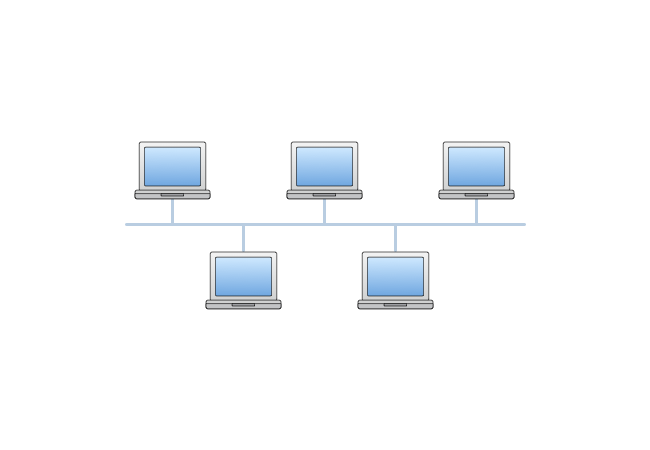
Ring topology
A ring topology, as yous might judge, is made up of nodes connected in the shape of a circle. Information is sent through the circumvolve until it reaches its destination.
Similar to the bus topology, unfortunately, when ane node fails, the whole network fails. However, although bandwidth is shared beyond all the devices and connections, band networks tin can outperform bus-based networks. Plus they are the easiest topology to re-configure, i.eastward. to add or remove devices.
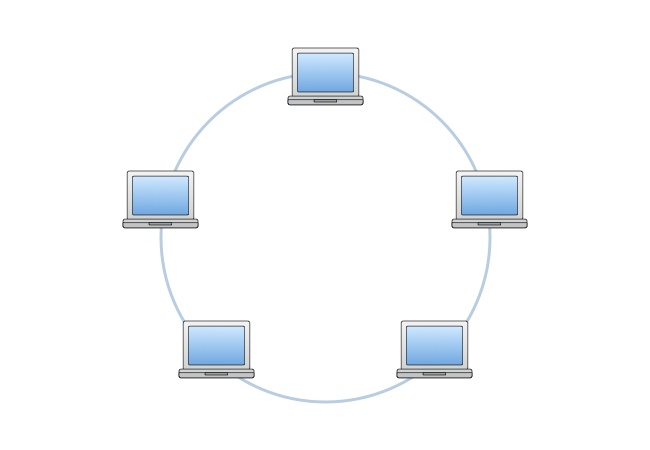
Star topology
Star topologies are one of the most common arrangements. All nodes connect to one central hub or switch through which all data passes.
These topologies are more reliable than either motorcoach or ring topologies because individual nodes can fail without affecting the rest of the network. This also makes information technology easy to take down any individual node for repair. However, if the primal hub fails, the entire network will stall. Plus, cable costs tend to exist college for star networks.
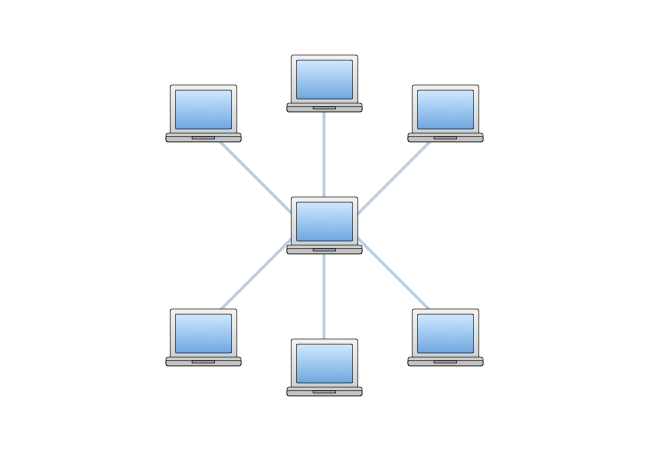
Mesh topology
There are two types of mesh topology: full mesh topology and partial mesh topology. In a full mesh topology, each node is directly connected to every other node. In a partial mesh topology, nodes are only connected to the nodes they collaborate with most. Each node in this type of network diagram relays data for the network.
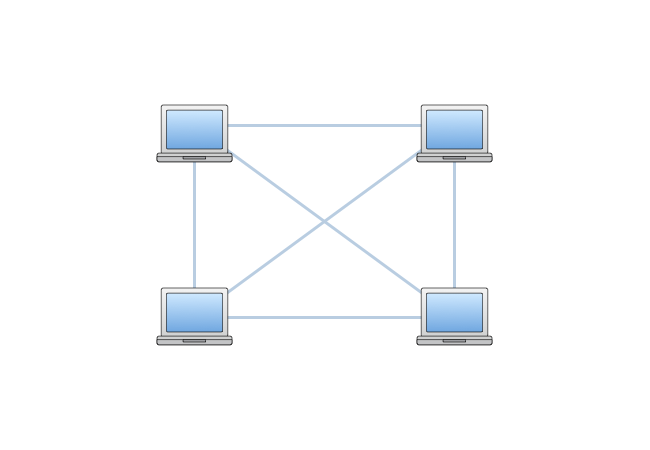
Tree topology
Tree topology is a combination of bus and star topology. Nearly networks employ some combination of topologies to form a hybrid topology.
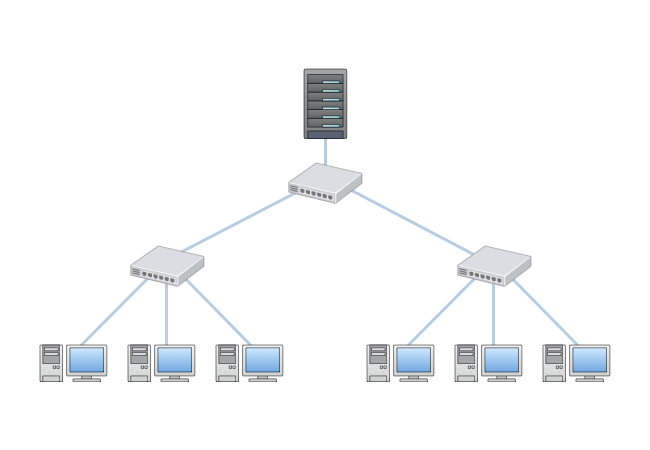
Creating network diagrams
Network diagram symbols
Since a network diagram is a visual representation of an actual system, it relies on symbols that represent both physical entities and kinds of relationships that exist between entities.
Here are some of the virtually common symbols:
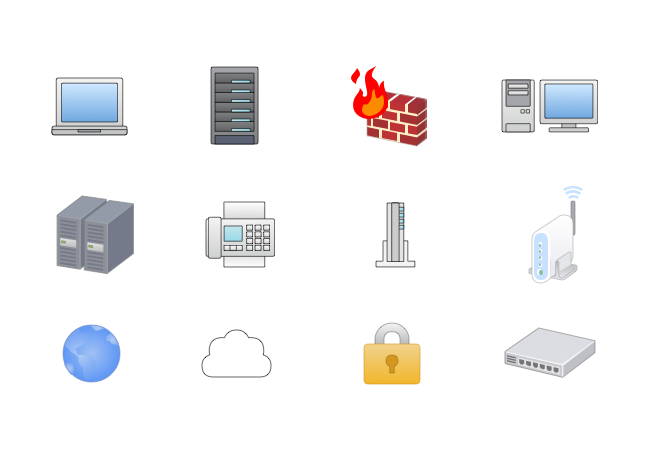
AWS and GCP symbols
Amazon Spider web Services and Google Deject Platform are two of the leading providers of cloud hosting services. Each accept their own sets of symbols for describing networks hosted on their services.
A few examples of AWS symbols available in Cacoo are:
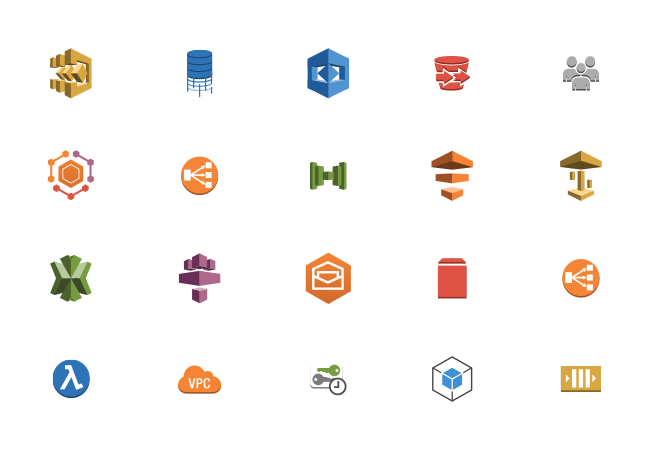
A few examples of GCP symbols available in Cacoo are:
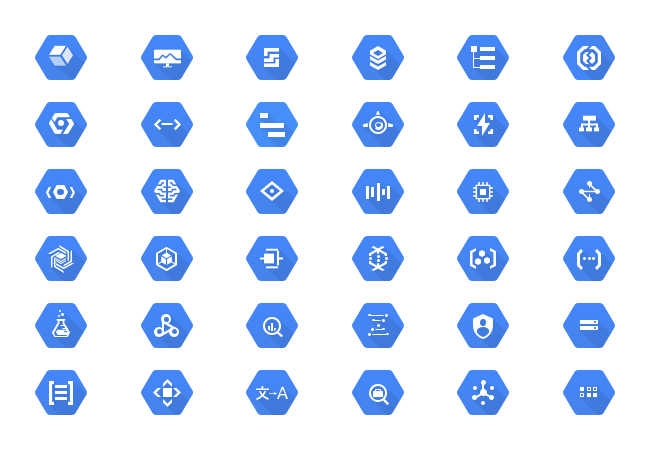
More AWS and GCP icons are available in Cacoo, or you tin can download them hither:
- Download AWS icons
- Download GCP icons
Terms
Like about kinds of diagrams, there are common terms people use to talk virtually the relationships between shapes.
Activities, which represent operations, are represented past arrows to show management.
In that location are four principal types of activities:
- Predecessor activities must be completed before the get-go of some other activity.
- Successor activities follow another action and cannot exist initiated until the activities that come earlier it are consummate.
- Concurrent activities start at the same time.
- Dummy activities do not apply any resources but depict dependence.
Events, which represent the get-go and/or completion of one or more activities, are represented by circles chosen nodes.
There are iii chief types of events:
- Merge events occur when 1 or more than activities connects with an event.
- Burst events occur when 1 or more activities leave an consequence.
- Merge and burst events occur when one or more activities merge and flare-up simultaneously.
Sequencing refers to how devices or activities deed in a series as information is transmitted. Sequencing is used to determine what jobs follow and keep, what jobs run meantime, and what controls the start and end of a manual.
Network diagram examples
Network diagrams vary past the type of network they represent and their network topology. Since network diagrams tin be used to represent basically any network, you'll observe a lot of varieties out at that place.
Here are only a few examples.
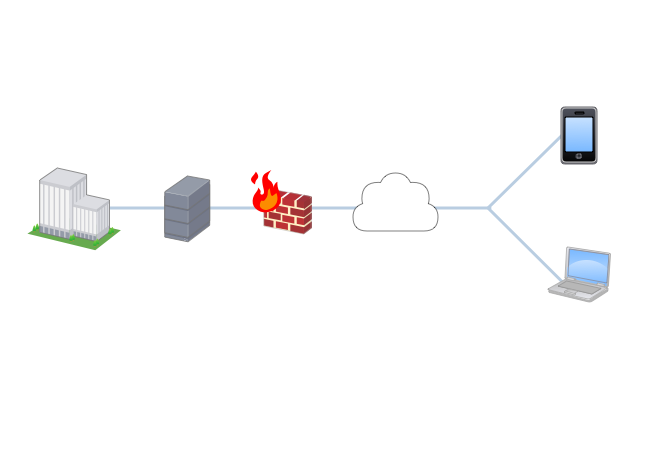 Example i
Example i
 Case 2
Case 2
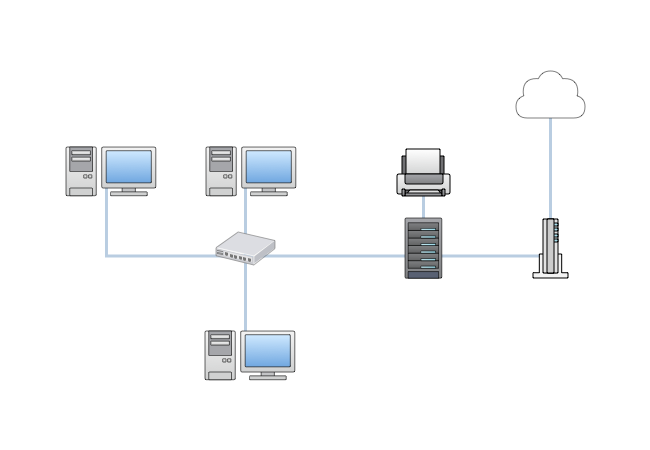 Example 3
Example 3
How to make network diagrams
Before you kickoff plopping down shapes and arranging them, make sure you've set a clear goal for your diagram. Then think about what needs to be included in order to reach that goal. Always remember: it'due south improve to create multiple diagrams to capture complex ideas rather than cramming likewise much information into a pocket-sized infinite.
Once you're ready to start diagramming, log in to your Cacoo business relationship and open up up the Editor. If you lot don't have an account, you can sign upwards for a free trial here.
Next, follow these steps:
- Select a template or blank sheet. The template library will pop upwardly automatically when you open the Cacoo Editor. You can either select a relevant network diagram template to go you started or create your piece of work from scratch with a blank canvas.
- Add together all your equipment. Whether you're working with a template or blank canvas, the first thing y'all want to do is make sure y'all have all the equipment you need on your canvas. Indistinguishable (Command/Ctrl+D) whatever shapes you need more of, delete ones you don't, and add new ones from the library of shapes. Simply elevate and driblet shapes from the shape library onto your Cacoo canvas. Don't worry about connections only yet. Focus on representing every device, server, router, firewall, or other components that are a office of the network.
- Suit your shapes. Looking to your stated goal and the network topology you programme to follow, begin moving your shapes around the canvas. Yous can click each shape and use the helpful guidelines provided in Cacoo to align your objects properly. For more on network typologies, visit our network topologies section.
- Label your components. Using text boxes, you can include any additional information your viewer may need to know such as names, IP addresses, device types, etc. Alternatively, you can number each component and provide this information in a separate legend.
- Add connections. Use lines between your components to show how they are connected by the flow of information. You can motility the existing lines if you lot initially chose a template or select the "New line" icon in your top menu to create and style your lines. Arrows can depict whether an effect is a merge issue, burst event, or merge and burst outcome—revisit our network diagram terms section for more on these terms. And finally, adjust line styles with the inspector tool.
- Clean upwards your formatting. Once your layout is complete, you tin can brand terminal adjustments to the placement, size, color, and other attributes of your diagram elements.
- Save your diagram & share it! Select the "Save Diagram" button at the top of the Editor to name and salve your diagram. The "Consign" and "Property" buttons will provide you lot with various options for sharing your diagram including exporting equally a PDF or SVG, sharing on social media (Twitter, Google+, Facebook), or sharing with a link. You can also embed your diagram on a website.
Network diagram templates
While creating network diagrams from scratch is easy with Cacoo, using templates tin can greatly speed upward your diagramming procedure.
In that location are many different types of network diagram templates to cull from in Cacoo. Simply open up the Editor, choose a template to get you started, and begin customizing information technology to your flow.
If you create a diagram you lot call up you'll desire to replicate, save it as a new template or stencil. With custom templates and stencils, you tin can recreate your best piece of work again and again.
Network diagram glossary & terms
Utilize these terms as a crook sheet if y'all ever see any terminology you don't sympathise:
(Source Creately)
- Activeness : It is an operation that is normally represented by an arrow (to show directions mostly) with an end as well as a starting point.
- It tin exist of iv types:
- Predecessor activity is to be completed earlier the showtime of another action.
- Successor activity cannot be initiated until the activities earlier they are completed. This successor activity should be in firsthand succession.
- Concurrent activity is to be started at the same time.
- Dummy activity does non use whatever resource but depicts dependence.
- AnOutcome is depicted by a circumvolve (as well known as a node ) and denotes completion of one or more than activities and starting of new ones. Events can be classified into three types:
- Merge event is where one or more activeness connects with the outcome and merges.
- Burst upshot is where one or more activeness leaves an consequence.
- Merge and Outburst event is where one or more than activeness merges and bursts simultaneously.
- Sequencing refers to the precedence of relationships between devices or activities. The following questions tin can help y'all figure out: What chore will follow or precede What jobs can run (or will run) meantime? What controls the start and finish?
Advanced tips & tricks
Best practices for drawing network diagrams
Use unremarkably accepted symbols and icons.
Similar nearly technical diagrams, in that location are commonly used shapes and icons people accept come to await when viewing a network diagram. Using shapes similar the ones available in Cacoo, you ensure that your audition will easily understand your diagram. While it may be tempting to get overly artistic with your diagram, the risk is usually not worth the reward.
Don't let lines cantankerous 1 another.
It becomes difficult to decipher paths of data when lines cross. Always create plenty room in your diagram so that lines never accept to cross.
Align objects.
Using the grid groundwork option in Cacoo along with the dotted guidelines that pop up when moving objects, it's easy to properly align objects for consistency.
Use different colors for unlike connections.
You can apply different colors for your connection lines to help viewers more easily decipher connection types.
E'er direct arrows left to correct.
Your diagrams should flow in one direction, left to right, to keep the flow of your diagram articulate.
Make sure at that place is merely one kickoff outcome and i end event.
If yous are trying to represent more than one, endeavour creating a separate diagram instead, and so each i clearly but depicts one start and stop.
Diagramming errors to avoid
In that location are a few mutual formatting errors you lot should e'er avoid.
- Looping. Your elements should never form an endless loop in the network diagram. All information should go from start event to terminate event, without getting trapped in a loop.
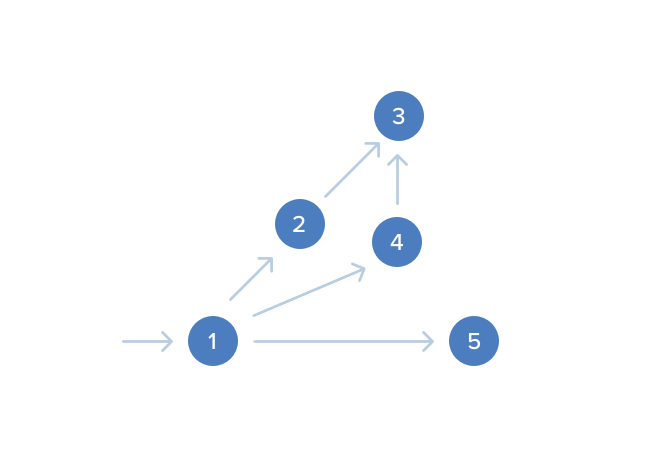
- Dangling. You should besides never take one element that is disconnected from all the other activities. If information enters this effect, no activeness volition emerge from it.
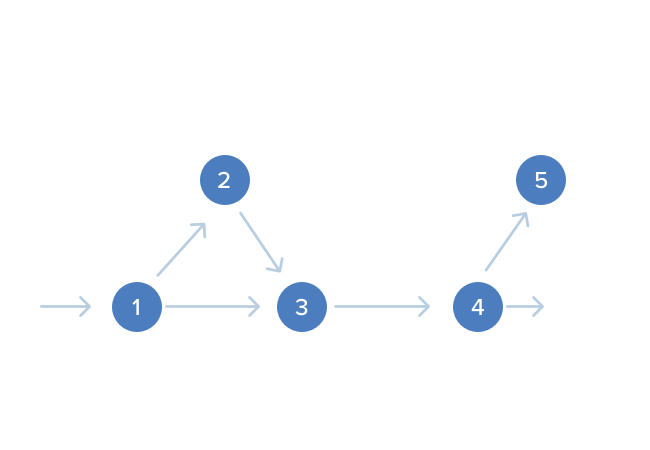
- Dummies. People sometimes utilize dummy elements for connections that don't exist or are imaginary. Usually these elements are represented past a dotted arrow.
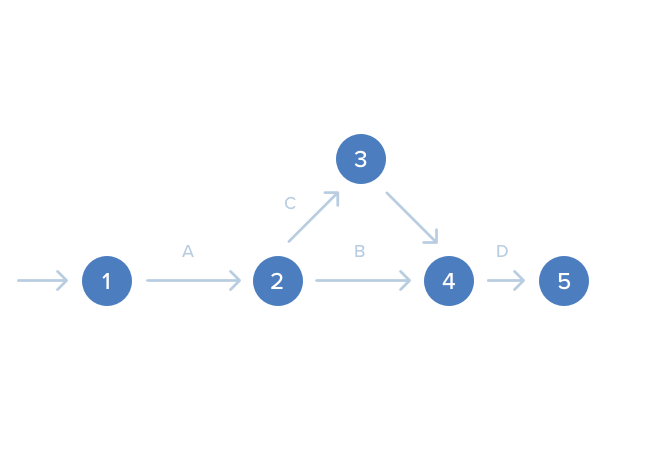
Network diagrams for project management
For both the project director and the team beingness managed, mastering network diagrams can exist extremely useful in creating and post-obit workflows. The unabridged scope of the project is easily viewable, something that may not otherwise be a reality for squad members used to only focusing on their own part of the projection at hand.
Cacoo for network diagrams
Cacoo is simple to use, piece of cake to larn, and built with collaboration in heed.
Using our cloud-based editor, your team can collaborate on diagrams in real-fourth dimension. With in-app comments right on diagrams and our presentation mode, you can go easy feedback to refine your piece of work. Shared folders give your squad gets admission to all the diagrams they need. And sharing diagrams with important stakeholders takes seconds (no downloading or business relationship creation required on their function).
Yous can create all kinds of professional diagrams; not just network diagrams, but flowcharts, sitemaps, wireframes, mind maps, and more.
Sign up to start using:
- Advanced exporting options (PNG, PDF, PPT, PostScript, or SVG)
- Revision history (see what changes were made and when)
- Full access to integrations (including Google Drive, Dropbox, Adobe Creative Cloud, and more)
- Team direction (invite people to your Organization, create groups, and assign roles)
- Avant-garde security (manage access to diagrams, so you know exactly who'due south seeing them)
Try it out for yourself with our fourteen-day free trial. No credit carte du jour required.
Source: https://cacoo.com/resources/network-diagrams-guide/
Post a Comment for "How to Draw Network Diagram in Cpm"